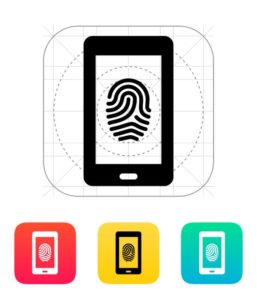
Google has become one of the biggest smartphone makers to embrace in-display fingerprint scanning, but reviewers are not impressed.
The tech giant revealed its new Pixel 6 and Pixel 6 Pro devices last month, and started shipping them last week. And while the new offerings appear to have received a warm response overall, some commentators have pointed out the flaws of the in-display fingerprint scanning system specifically.
TechRadar’s John McCann and James Peckham have reported that both versions of the new Pixel are slow and inaccurate, with a relatively high number of false rejections. Writing for Tom’s Guide, Roland Moore-Colyer agreed that the Pixel 6’s scanner is slow in comparison to other in-display sensors, and that it’s unreliable, falsely rejecting one of his registered thumbs far more often than the other.
Notably, both McCann and Moore-Colyer acknowledge that the Pixel 6’s sensor seems slow by a thin margin. McCann notes that the sensor is “a tad slow” by “a fraction of a second”, while Moore-Colyer complains of “a split-second delay between touching the scanner section of the display and the phone unlocking”.
Lest anyone believes these particular tech reviewers are simply too whiny, there is reportedly similar chatter from consumers on Reddit. The key takeaway from these responses is that in-display fingerprint scanning has reached a state of the art in which there is little margin for error. In-display fingerprint scanning may be a novelty on the most prominent Western smartphone brands – this is Google’s first foray, and Apple has yet to make an attempt in a commercial device – but it’s increasingly commonplace on devices from Asia-based smartphone makers, and consumers are used to completing their biometric scans quickly; it’s one of the hallmark advantages of the authentication technology.
To make matters worse, the Pixel 6 does not have a face unlock feature. Having made a big splash with its Soli chip-powered facial recognition feature on the Pixel 4, Google went on to abandon selfie authentication in the Pixel 5, and it remains off the menu with respect to the Pixel 6. That means fingerprint scanning is the only biometric option for end users on Google’s latest flagship phone.
For Forbes’s Janhoi McGregor, that was a big misstep. “Breezing through London Underground with a glance, instead of fumbling to get a successful read with the under-screen fingerprint scanner, is simply better,” he wrote. Remarkably, Tom’s Guide’s Moore-Colyer also cites the user experience on London’s Underground transit system in his column on the faults of the Pixel 6’s in-display scanning, arguing that “at rush hour the split-second disparity between a phone unlocking can mean the difference between gliding through an aisle gate or getting rear-ended by an onrushing commuter.”
This commentary offers a potentially useful lesson to smartphone makers and the biometric companies with which they collaborate. Consumers love the convenience of biometric authentication, and find it useful on a daily basis. For that same reason, they need it to work flawlessly. Aiming for next-generation technology like in-display scanning is great, but you better not miss.
Sources: TechRadar, Tom’s Guide, Forbes
–
(Originally posted on Mobile ID World)







Follow Us